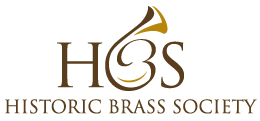 Concerto Palatino, dir. Bruce Dickey. Nature’s Secret Whispering: Music in the Cosmology of Johannes Kepler (1571–1630). Passacaille PAS 1073, recorded November 2019. passacaille.be
Concerto Palatino, dir. Bruce Dickey. Nature’s Secret Whispering: Music in the Cosmology of Johannes Kepler (1571–1630). Passacaille PAS 1073, recorded November 2019. passacaille.be
In the more than thirty years since it was founded by Bruce Dickey and Charles Toet, Concerto Palatino has become, I think it’s fair to say, the gold standard of early-modern brass ensembles—both for the uniformly superb level of their playing and for the interesting projects they have taken on. Here is perhaps their most interesting project yet: a program of music revolving (no pun intended, sort of) around the thought of the great astronomer Johannes Kepler.
In the liner notes, Dickey introduces us to Kepler’s view of the universe and what he saw as its harmony, a harmony that included not only his most famous discovery, the elliptical orbits of the planets, but the sublunary harmonies of mathematics and music. And the disk itself presents a kind of musical backdrop for this, with sixteen works by composers whose music Kepler would have known and one new piece inspired by him. The ensemble consists of violin, cornett, four trombones, organ, and seven singers (SSATTBarB), and plays at A=440.
The old music consists of one dance pair by Erasmus Widmann, played by the instruments, and motets by a few celebrities like Orlando di Lasso, Andrea Gabrieli, and Hans Leo Hassler, plus two composers I had never knowingly heard of, Annibale Perini and Lambert de Sayve, who were active in Graz before and during Kepler’s time there. The large-scale works (a 10 and a 12) are performed in the good old Venetian polychoral style, with a central SATB choir of voices framed by high and low choirs that mix voices and instruments; the dance pair and Gabrieli’s Beati quorum remissae sunt are done instrumentally; Lambert’s gorgeous Miserere mei Deus is sung by the voices a cappella; and the rest mix voices and instruments, sometimes doubling, sometimes substituting, sometimes adding and subtracting.
Calliope Tsoupaki’s Astron deserves a paragraph to itself as the longest work (10½ minutes) on the CD and the one commissioned as part of this project. It sets a classical Orphic hymn in Greek, moving deftly among vocal solos by the incomparable Hana Blažíková, solos for the cornett and violin, and ensemble interjections, like a tragic chorus, from the voices and instruments—now ethereal, now stark, now hair-raising. Well, you have to hear it yourself, I’m not going to do it justice. At the very least, O members of the Historic Brass Society, it shows what our instruments still have to offer to composers who care to listen.
What have I learned listening to this? For one thing, I have learned that I want to hear more Lambert and Perini: something that should never surprise us, but does, about the late sixteenth century is how deep the craft of polyphony went and what magnificent music has been left by composers outside the mainstream. I now have a higher opinion of Andrea Gabrieli, whom I had always thought of as writing music much like Giovanni’s but not nearly as interesting. And I have learned that it’s possible to do Lasso’s great Tristis est anima mea faster than I had ever imagined (2:41 here, vs. 4:49 by the Brabant Ensemble).
But the real revelation for me is the sheer sound of the current ensemble, so precise, so disciplined, so delicate, yet so warm and expressive and seductive, especially on music that is generally (and gloriously) mined more for its pomp and spectacle. Concerto Palatino has been hinting at this sound for years, but I at least had never heard anything quite like it. Whatever you play, this CD will enrich your musicianship and life. To my fellow cornettists and sackbuttists out there—lucky us.
Kenneth Kreitner



